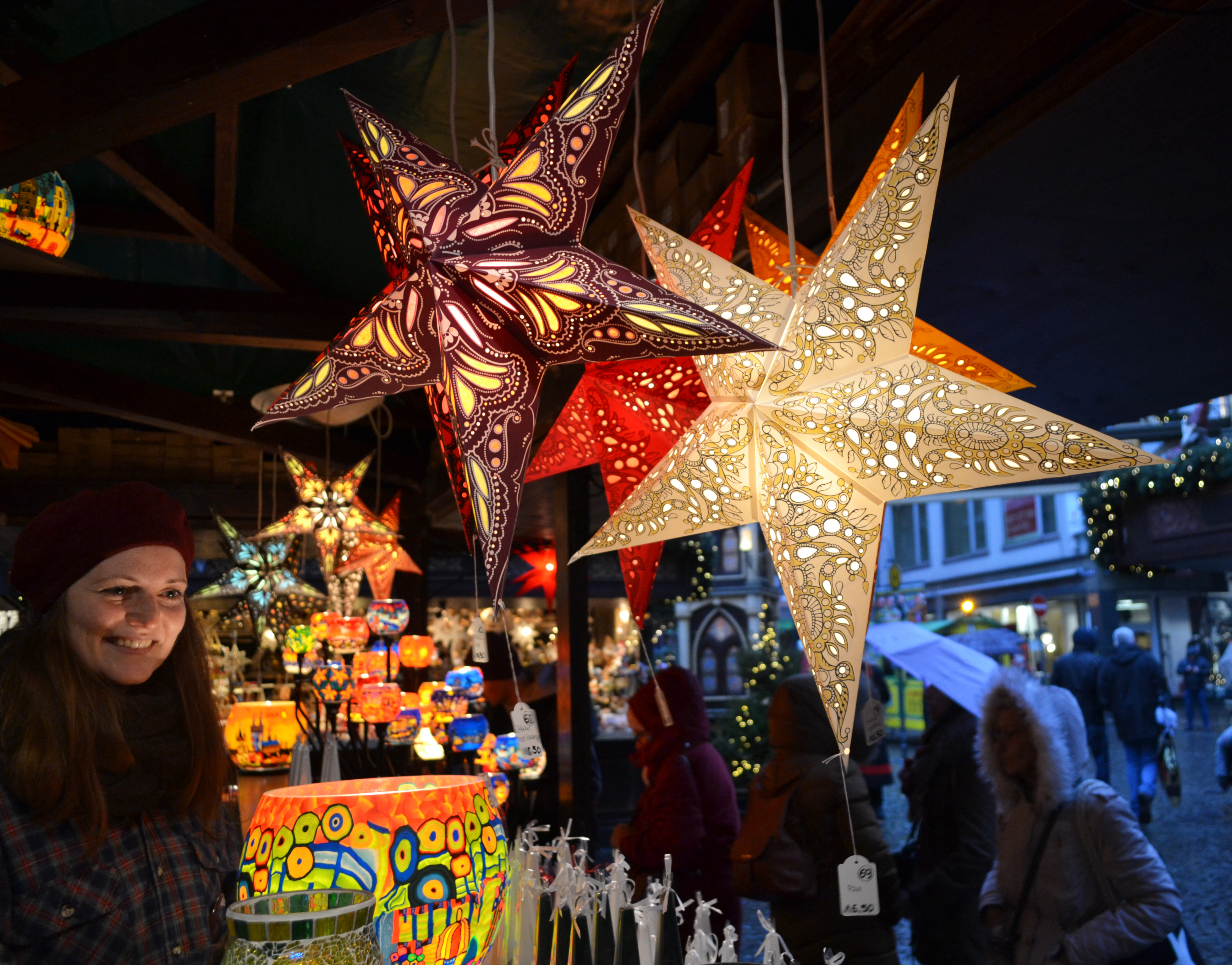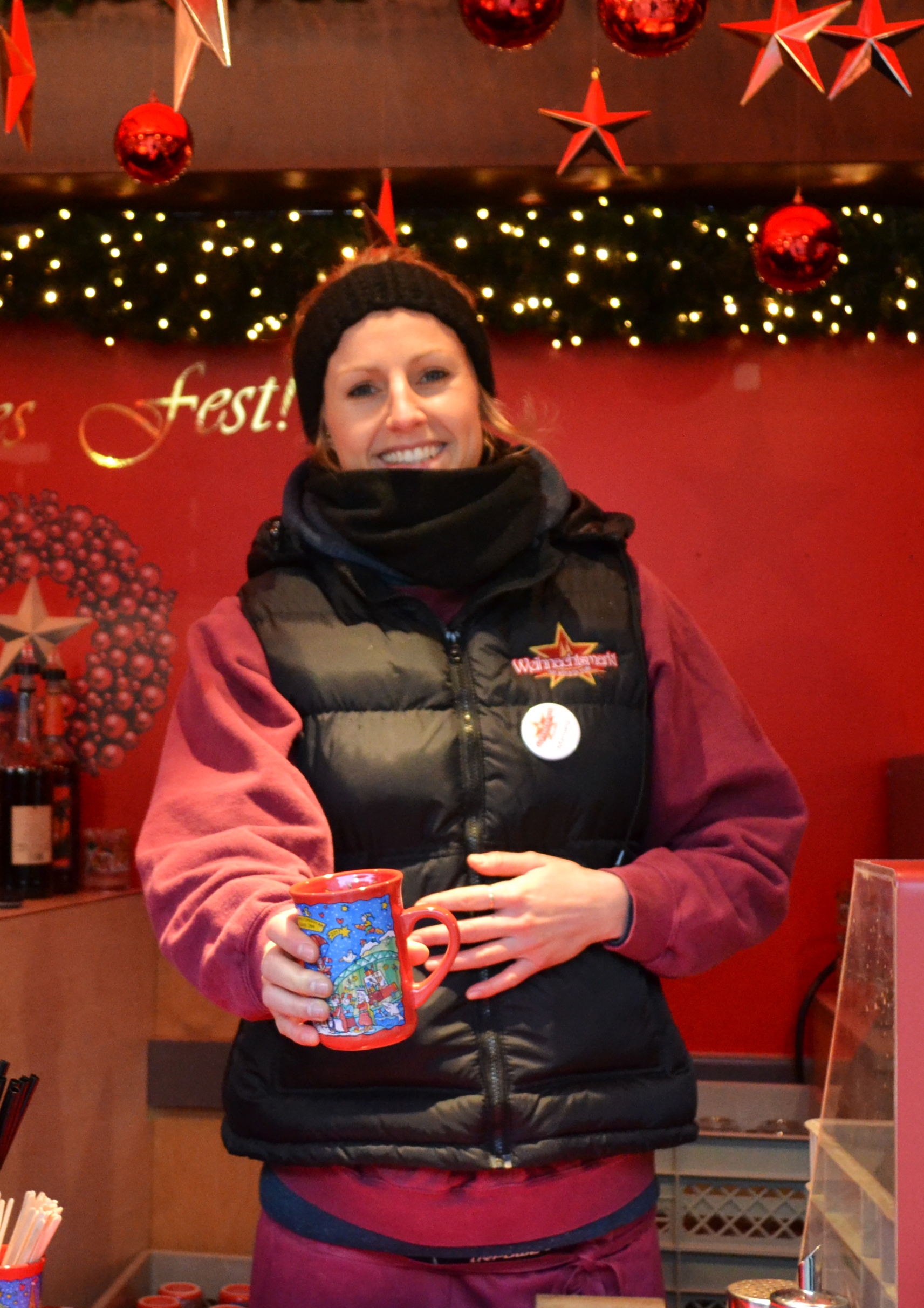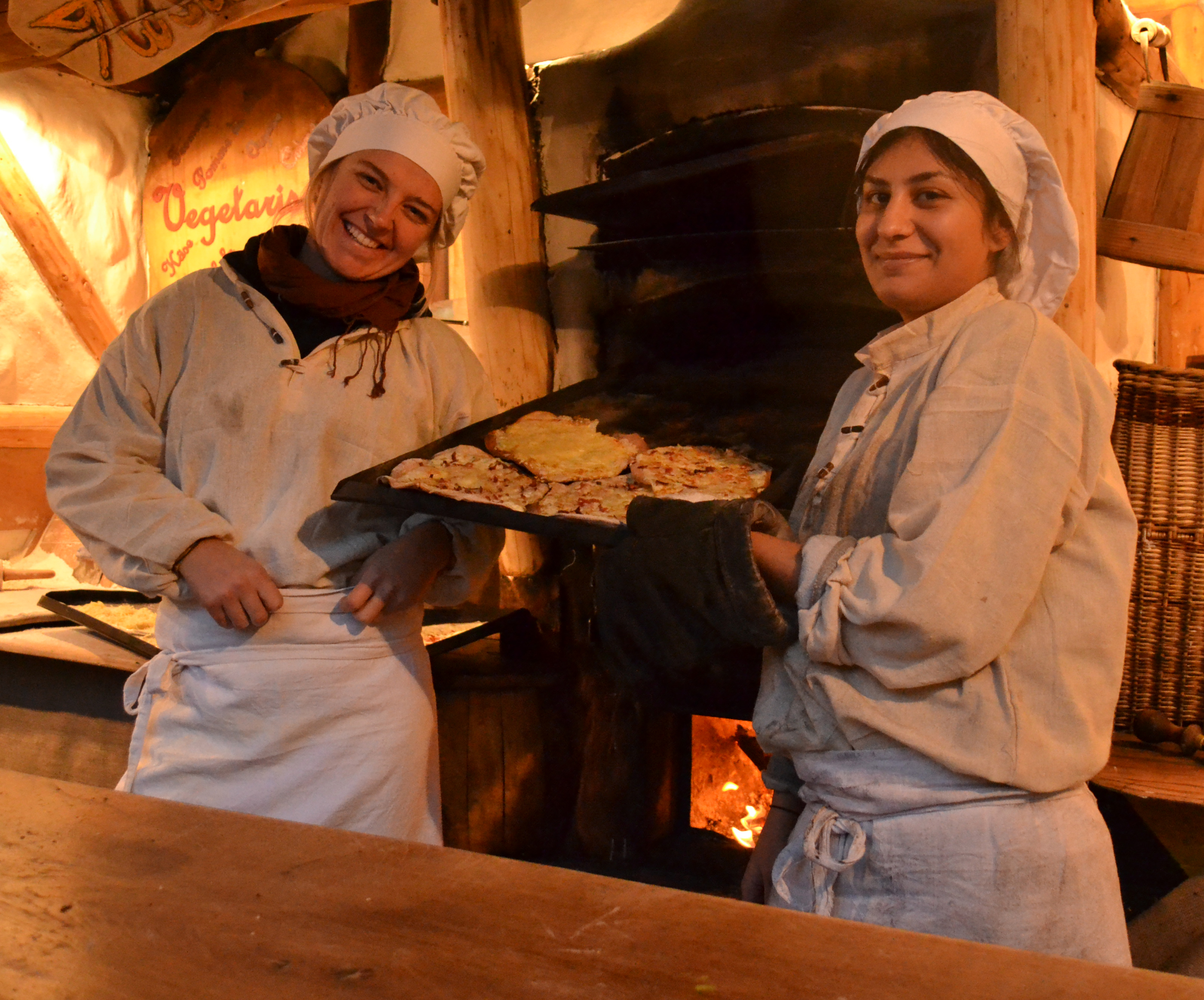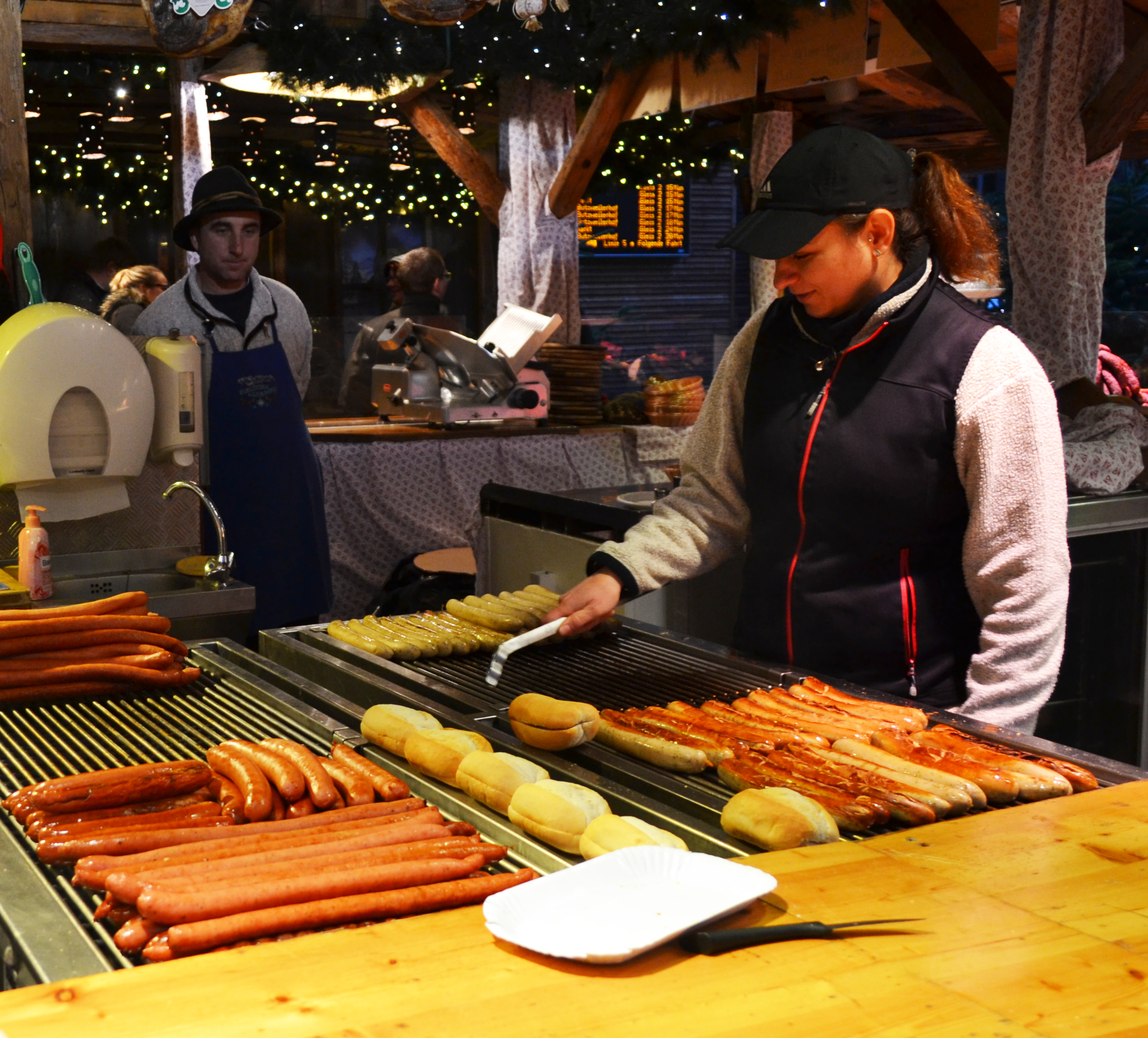
COLOGNE, GERMANY — If you have a hearty appetite and a craving for high-sugar, high-cholesterol food, then there's nothing quite like eating your way through Germany’s popular Christmas markets.
There's always a sense of adventure at a Deutsch holiday market, actually called a weihnachtsmarkt, and a willingness by everyone there to be satiated with tasty comfort food as the weather turns cold.
I initiated my fast-paced, belt-expanding venture by selecting a cruise between Amsterdam and Basel on the newly-built AMA Kristina from AMA Waterways. The seven-day food fest really began the first night on board the ship, which featured a small but efficient kitchen that somehow turned out food for 156 hungry passengers, a large dining room with panoramic windows and an on-board horseshoe-shaped bar stocked to the gills.
To get me in the Christmas food mood, the crew had left a large bottle of welcoming red wine in my room. For me it was to be a precursor to what I discovered at Cologne, our first port of call — hot, spiced red wine, called glühwein. I had never thought of hot wine tasting good, but when you mix dry red wine with a brew of spices such as cloves and cardamon, sugar and citrus fruits, you're ready to add mirth to a holiday party. Maybe that's why some call it “glow wine” instead of glühwein.


Above: Europe's Christmas markets are colourful places with lots of friendly people.
The drink dates back to 500BCE when spices and herbs were added to wine for health reasons. Not all spiced wines are the same, however, and I actually found the best mulled wine a couple of years ago in Vienna's main Christmas market near the Rathaus, or city hall.
It was cold and rainy in Cologne when we docked, but the bright red stall awnings, trimmed with green garland and twinkling white lights, gave the large holiday gathering a festive look. This colourful extravaganza near the famous Cologne Cathedral featured 150 market stalls with vendors offering a wide variety of rich chocolates and other candies, scarves and mittens, colourful children's toys, yellow beeswax candles, tree ornaments and miniature lighted half-timbered houses with pointy roofs.
If you have a sweet tooth, the Christmas markets are your friend. Sugary marzipan can be purchased in the form of candy bars, in the shape of small animals or imitation fruits or even in the shape of a large loaf of bread, called marzipanbrot.
Then there’s the schneeball, a pastry made from shortcrust rolled into a ball and decorated with icing sugar, hence the name “snowball.” A typical cake found in certain areas of Germany, the schneeball comes with a variety of coatings. I actually never ate one while on my Christmas Market tour because 1) they are huge 2) very sweet and sugary, and 3) they are deep fried.
It’s absolutely verboten to go to any German Christmas market without tasting the Lebkuchen, Germany's favourite snack. The gingerbread became so popular that in the 17th century Nuremberg’s Lebkuchners agreed on a purity law which applies to this day.
While the composition is a baker’s secret, I found out it contains eggs, flour, honey, hazelnuts, walnuts and almonds, along with candied orange, lemon peels, marzipan and lots of spices.
Further down the Rhine at the small wine village of Rüdesheim near the Lorelei Valley, I investigated the possibilities of purchasing an afternoon snack of marzipan or Lebkuchen, each of which were in abundance at this town's inviting Christmas stalls. And when I couldn't decide which to choose, I had both.


Above: You won't go hungry at the Christmas markets in Germany where there's lots of regional treats.
A woman and her young daughter sitting in a warming booth and sipping a hot drink, explained they travelled every year from Hannover, over 600kms away, to spend a couple of days here taking in the sights, the good smells and treats. It looked to me like a lot of other people were doing the same thing. But then I noticed a booth offering glühbier — now this was something I had to try. The frothy, mulled drink, sometimes referred to as a “tempest in a tankard,” mixes beer, mandarin oranges, honey, ginger, cloves, cinnamon, anise, nutmeg, bourbon and cherry juice. Check off another liquid requirement for me when attending European Christmas markets.
Then there's the tempting Rüdesheimer coffee, which the manager of a local restaurant said was invented by German television Chef Hans Karl Adam in 1957.
“You'll be dancing back to your ship after you drink this,” I was told.
The potent drink is made of sugar cubes, flambeed Asbach brandy, strong coffee, a topping of whipped sweetened cream with vanilla sugar and comes topped with chocolate flakes. For me it was love at first sip.
At the intriguing blocks-long Speyer Christmas market in the city centre, I was drawn to the booth with an attractive handmade wooden signboard which read “Wild & Kase” offering wildwurst or game sausage; wild fleisch or game meat; Klosterkäse cheese, which is ripened for four months and has a strong, spicy taste, and Weinkäse, or fruity-sour wine cheese with a very thick black casing.
I had just eaten or I might have also tried their tempting wild boar sandwich.
Other Christmas market stops on my cruise were in Strasbourg, France, the 13th-century village of Gengenbach in the Black Forest, and Freiburg, the sunniest city in Germany.
My new diet started the day I returned from the trip, but frankly the Rhine River Christmas markets are just too tasty to pass up.
I’ve never been to a German Christmas market I didn’t like.
About the Author
As a travel writer/photographer, Don has written a number of travel articles about both U.S. and European destinations. Don writes for a number of publications, having earned a degree in journalism from the University of Illinois. He has been a newspaper reporter, editor, publisher and once even owned his own newspaper. At age 14 he started his own magazine, and today publishes three magazines and has written 12 books. He also worked for 10 years in corporate public relations in downtown Chicago, and while serving in the U.S. Army became editor of the Army newspaper at Fort Knox, Kentucky. Don hosted his own radio show for 2 years and has appeared on Public Television's (PBS) Tracks Ahead program.